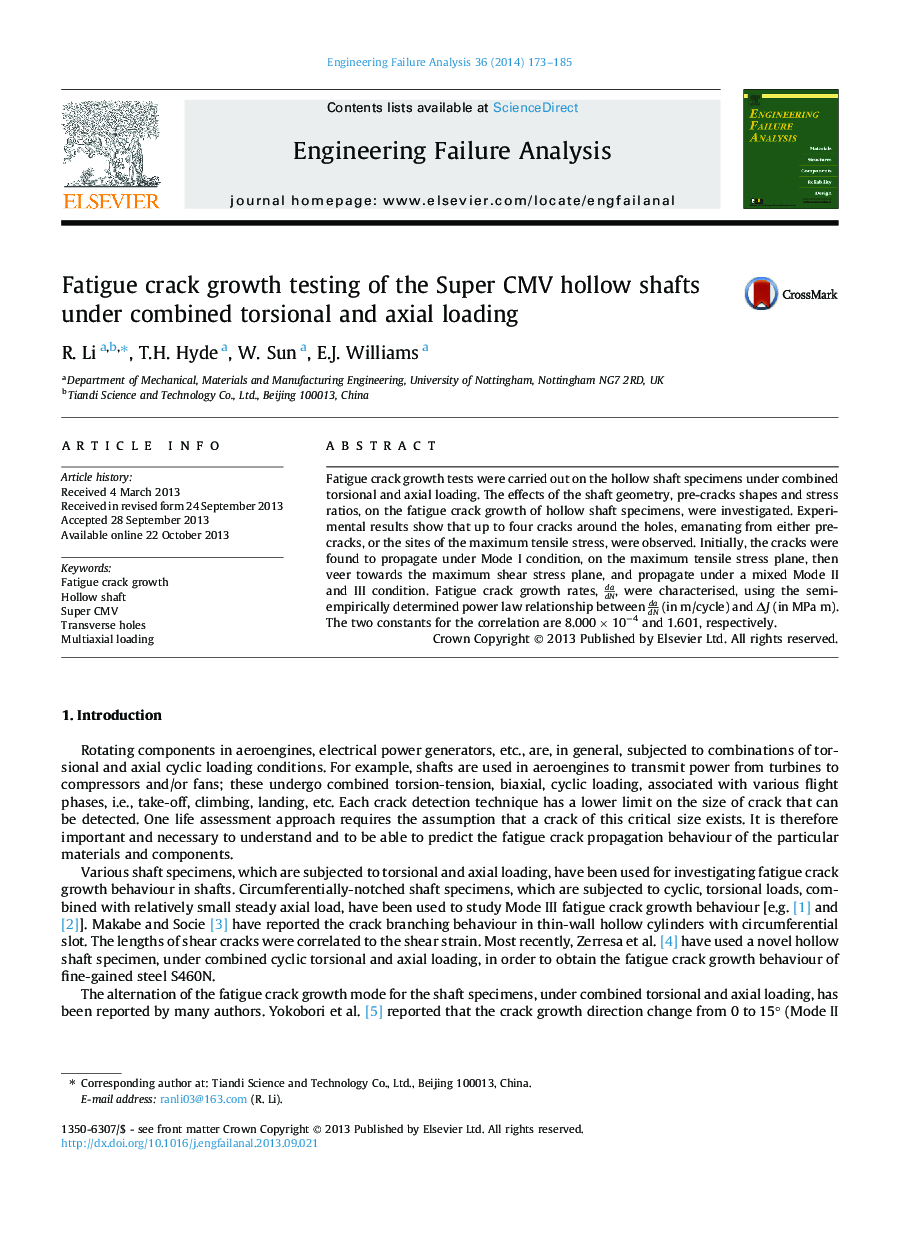| Article ID | Journal | Published Year | Pages | File Type |
|---|---|---|---|---|
| 773930 | Engineering Failure Analysis | 2014 | 13 Pages |
•We perform fatigue crack growth tests on Super CMV hollow shaft specimens.•We interpret the experimental result and characterise fatigue crack growth rates.•Cracks initially grow under Mode I condition and then turn to in mixed Mode II and III.•Correlation between the crack growth rates and the cyclic J-integrals is obtained.
Fatigue crack growth tests were carried out on the hollow shaft specimens under combined torsional and axial loading. The effects of the shaft geometry, pre-cracks shapes and stress ratios, on the fatigue crack growth of hollow shaft specimens, were investigated. Experimental results show that up to four cracks around the holes, emanating from either pre-cracks, or the sites of the maximum tensile stress, were observed. Initially, the cracks were found to propagate under Mode I condition, on the maximum tensile stress plane, then veer towards the maximum shear stress plane, and propagate under a mixed Mode II and III condition. Fatigue crack growth rates, dadN, were characterised, using the semi-empirically determined power law relationship between dadN (in m/cycle) and ΔJ (in MPa m). The two constants for the correlation are 8.000 × 10−4 and 1.601, respectively.
